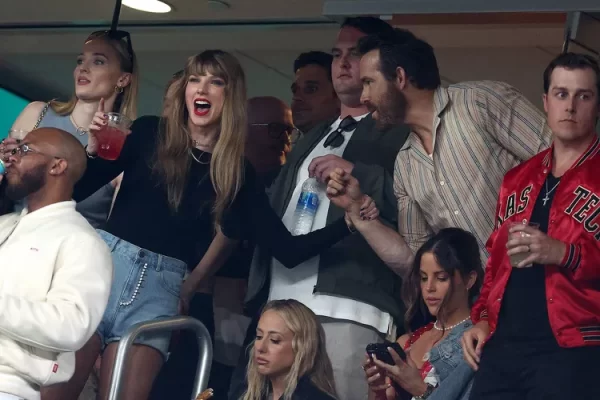Q&A with Broughton students and teachers: the challenges of virtual vs in-person instruction
With the return of in-person learning in the form of cohorts, students face a new set of regulations and procedures to mitigate the spread of COVID-19.
Broughton students have now transitioned to cohort-based in-person learning this semester. Some students can/have chosen to remain in the Virtual Academy (VA), but most operate in one of the three cohorts and rotate into the building on a weekly basis. For every set of three weeks, students opting in cohort rotations come to the building one week and are virtual for the other two.
When asked about their opinions on in-person learning, students shared their thoughts. Below are some of the questions asked:
Q: Which type of learning would you prefer during this time/this year?
A: One hundred percent of students who participated in the survey answered in-person learning versus virtual learning.
Q: On a scale of 1-5, how anxious are you about the possibility of catching COVID during rotational in-person learning?
A: From one (not anxious at all) to five (extremely nervous), 50 percent of students indicated a two, and 33 percent indicated a three. Most students are in the middle in terms of the anxieties related to COVID-19 spreading during in-person learning.
Q: What is the most important aspect of school for you?
A: 83 percent of students indicated that the social aspect of school was the most important to them. 17 percent indicated that structure was most important.
When asked how the pandemic has shaped their view of school, William Brown replied, “The longer the pandemic has gone on the less motivated I have been to do school work. Although it seems I have less work, it is much harder for me to motivate myself to do it.”
The vast majority of students participating in the survey expressed a lack of motivation when it comes to getting to class and getting the work done.
Teachers have also had their fair share of problems related to the pandemic and the shift to a completely virtual environment. After an interview with two of Broughton’s teachers, Mr. Martin and Mr. Corsetti, this is what was said in regards to their struggles.
Q: What has been the hardest part about teaching this year regarding online vs. in-person classes?
“As a physics teacher during normal times, I have been able to observe students’ facial expression or their body language and get a sense of who is ‘getting it’ and who isn’t. I am also accustomed to walking around the room while students try to solve problems, looking over their shoulders, and assessing how well individual students or the entire class is or is not progressing. I can’t do ANY of those things during remote instruction,” Mr. Corsetti replied.
“What isn’t hard about it?! For me, it’s been how much more extra time I’ve had to spend to prepare and publish instruction and deal with grading. In addition, my courses (video production and film) have been very challenging to teach, since so much of our work requires using lots of school-based equipment and working collaboratively in close contact with others… something that COVID-19 obviously put a grinding halt to,” Mr. Martin replied.
Q: Has your teaching style altered since the beginning of the pandemic and the fully virtual learning versus what it was like before?
“Yup! I can’t do demonstrations nearly as well and have not been able to do labs like I would prefer. While I normally don’t do labs every day, they are informative and helpful for students learning physics. I can post online simulations but it is not the same as rolling a steel ball-bearing off of a table and seeing with your own eyes if it lands in a cup you placed in a specific spot on the floor based on your group’s calculations,” Mr. Corsetti replied.
“It had to – and I’m sure that’s the case for most teachers. Holding a Masters in Instructional Technology, I learned long ago that trying to teach a distance learning course is an entirely different beast than traditional in-person teaching. Just about everything about the way I teach has had to change over the past 365 days,” Mr. Martin replied.
Q: What is something you have noticed that a lot of students are struggling with, and, what would you encourage students to strive for during this unpredictable time?
A: “I see many struggles for my students. I think it is more difficult for them to assess how well they are understanding instruction on a day-to-day basis. I feel that there is a social, interactive aspect of school – both between teachers and students as well as between students and their classmates – that helps students learn. Clearly, this social aspect has been missing this year.
On a practical level, I think it can be challenging for students to keep up with assignments when they may or may not be posted in Google Classroom or posted in other places. Sometimes a simple mistake like not clicking on the ‘submit’, ‘turn in’, or ‘return’ button can lead to misunderstandings and frustration for both students and teachers. I will sound like an old man when I say this: with the advent of cell phone texting and posting via social media, I feel young people are not being forced to communicate face-to-face like I had to when I was in high school.
I fear that skills in communicating in person effectively – both speaking and listening—are being lost. I felt this was a growing problem before the pandemic. Now we have had no choice but to depend upon electronic means of communication to an even greater extent; therefore, I am concerned about this issue to an even greater degree.”
Mr. Corsetti continues, “I would encourage students to engage with others as best they can, to ask questions of their teachers and one another and take the time it takes to really listen to others, ask clarifying questions and hear them out. I encourage students to recognize how the pandemic increases difficulties and challenges for them and to not beat themselves up too much because of them. Lastly, I encourage them to grit their teeth and hang in there. This will be over someday – it really will. In some ways, we will all be stronger for it in the end.”
A: “I’d have to say motivation. In these difficult times, it’s hard for some students to find the motivation to do what’s required of them. While learning at home, it’s so easy to find a distraction, sleep late, or feel apathetic about it all, since it’s such a drastic difference from what school normally looks like. I expect many teachers have struggled with this, too – I know I have!” Mr. Martin highlighted.
“I’d encourage students to try to look at this entire situation as a chance to learn, grow, and prepare for the future. Once things are “back to normal,” I expect many facets of careers will change.
Employers have found it can be a big plus to have employees working from home. At some point in your education after high school (whether in a job, college, military, or whatever you choose to do) you’ll likely have to take some form of online classes or training.
From my experience (I’ve taken over 20 online college classes since 1996), those kinds of online courses are nowhere near as engaging and interactive as what Broughton’s teachers have attempted to do this year online. It’s a practical experience that will hopefully help you navigate those kinds of experiences in your future.”
The shifts between online and in-person learning have been a long journey for students and teachers alike. Students are always encouraged to reach out to a teacher or a counselor if they are struggling and need help during this time.








